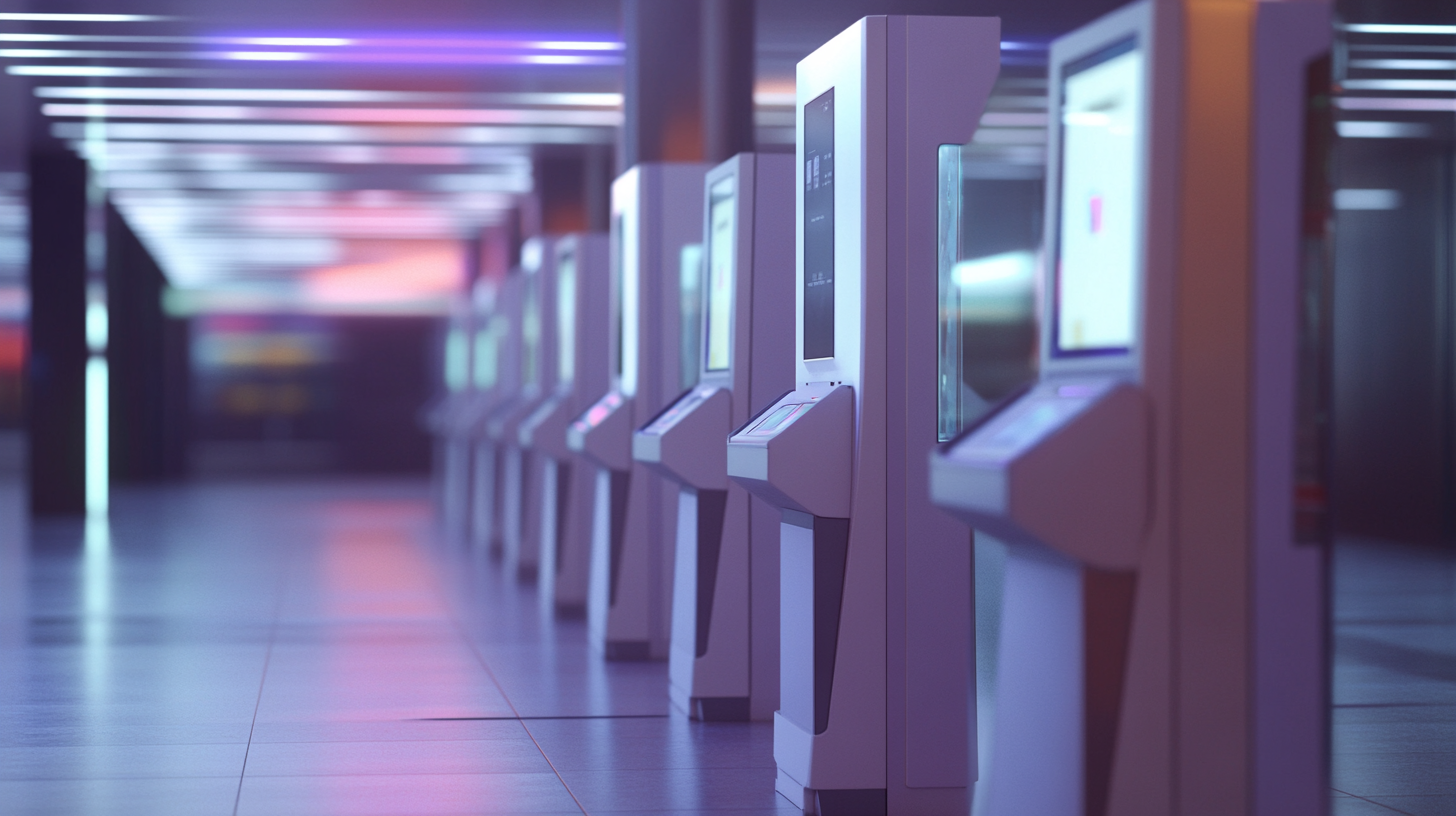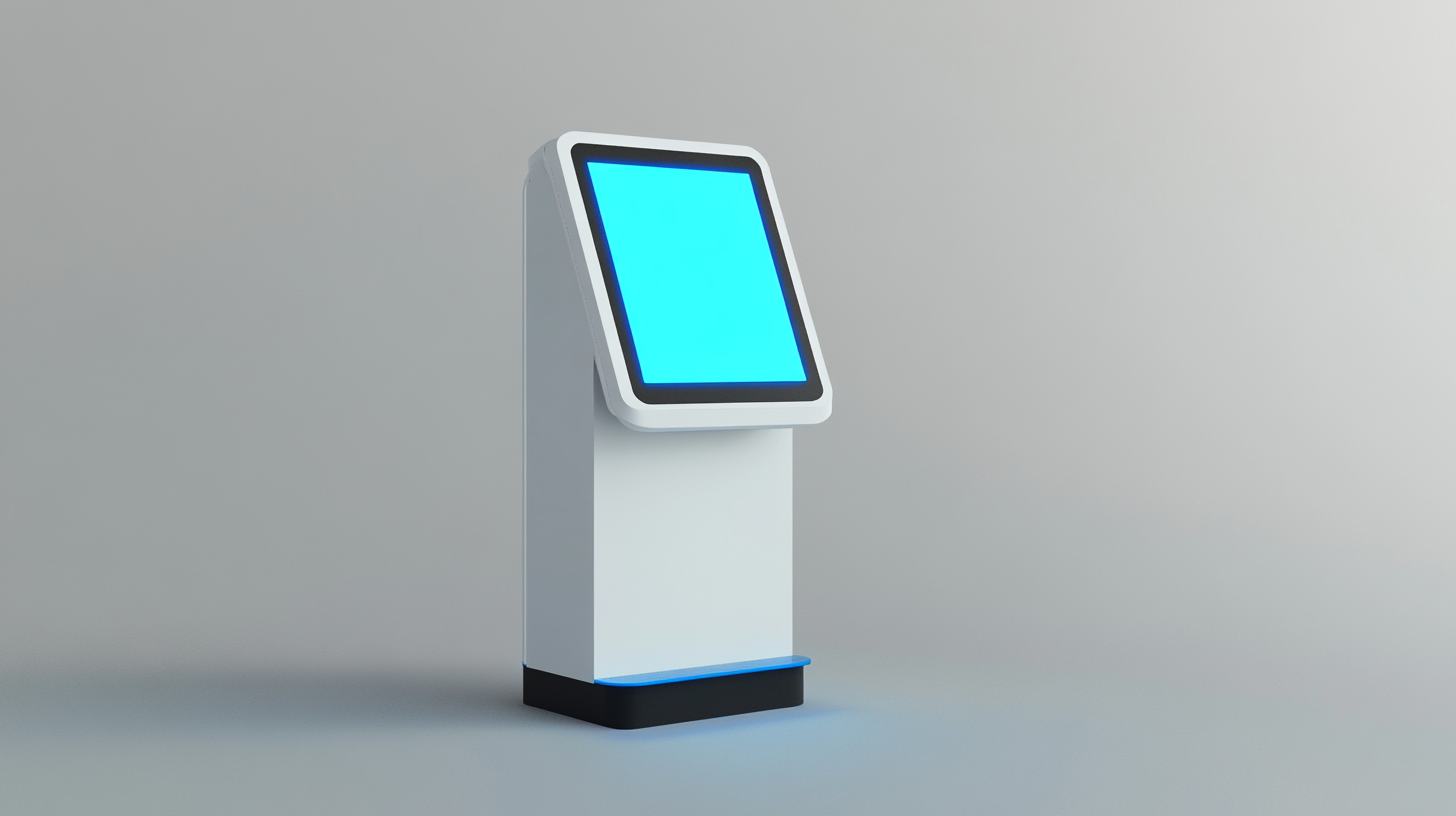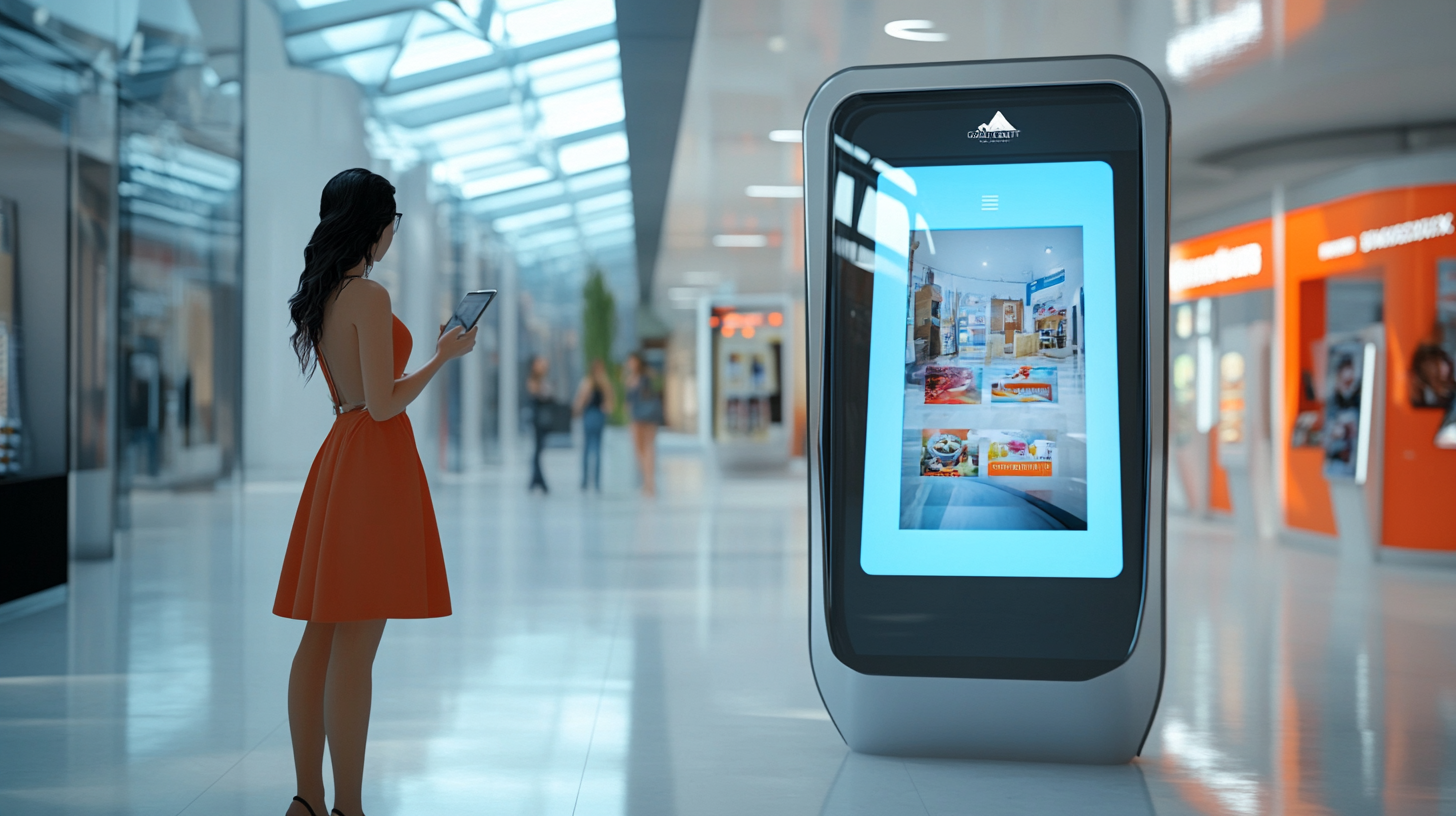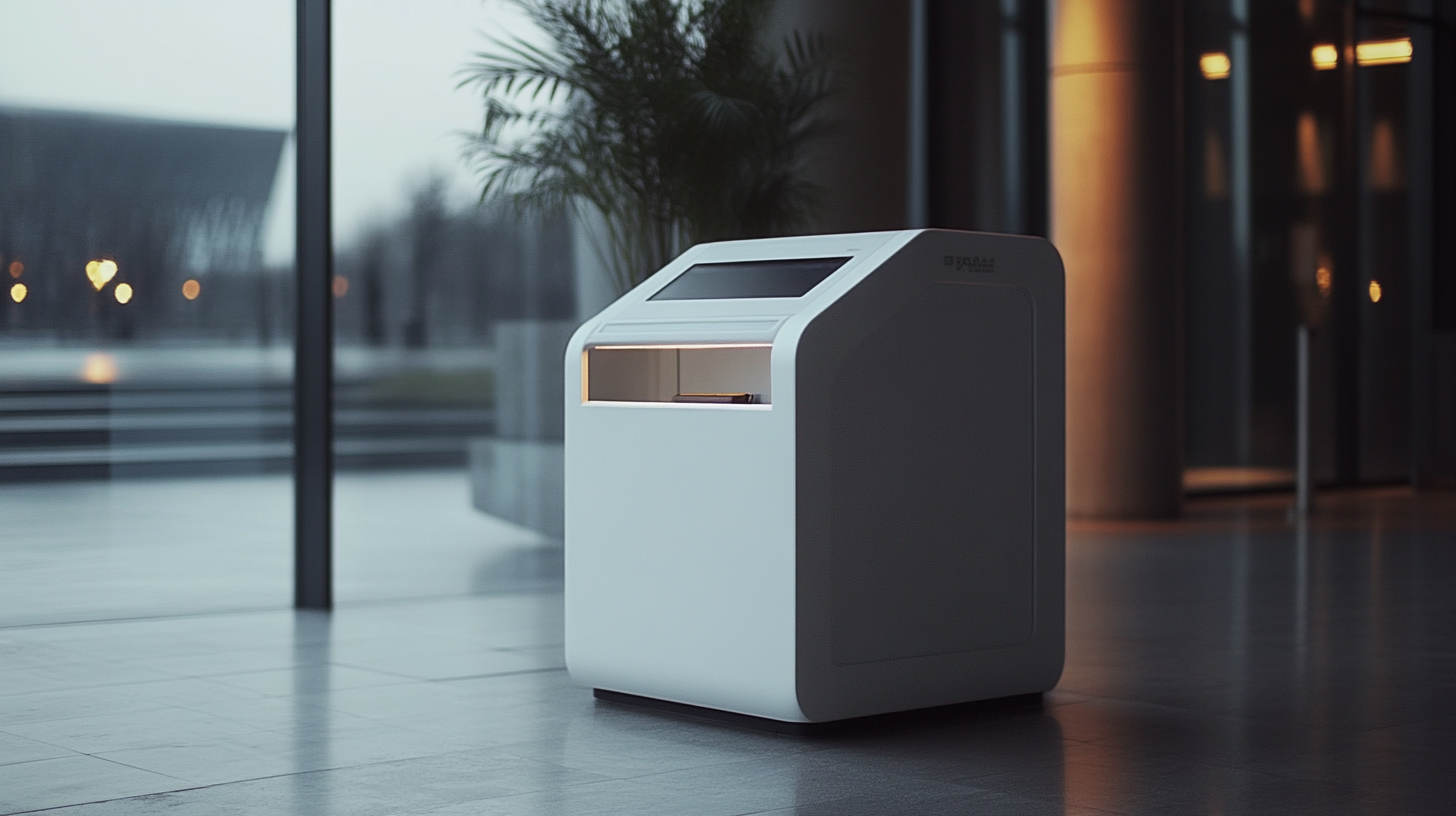Table of Contents
- Understanding the Rise of Self-Ordering Kiosks in Global Markets
- Key Benefits of Self-Ordering Kiosks for Businesses and Customers
- Technological Innovations Driving the Adoption of Self-Ordering Kiosks
- Case Studies: Successful Implementations in Various Industries
- Future Trends: What’s Next for Self-Ordering Kiosks in the Global Landscape
- FAQS
- Related Posts
The Self-Ordering Kiosk is a revolutionary development that is gaining acceptance in markets around the globe. These kiosks allow customers to place their orders seamlessly while giving businesses room to optimize their operations to provide a personalized experience. Consumers are opting for a tech-driven comfortable way; hence the introduction of self-ordering kiosks has become one of the key strategies for brands wishing to remain competitive in today's digital marketplace.
The emergence of self-ordering kiosks is seemingly changing the way traditional customer interfaces operate toward becoming seamless and engaging experiences. These kiosks provide customization options and allow quick transactions, eliminating wait times and the need for cashiers. In this blog, we will explore the various ways in which self-service kiosks are enhancing customer experience across industries, citing some best-case examples, and looking ahead at trends that promise to disrupt the future of customer-brand interaction. The transition into this unique technology is more than a fad; it is a shift in how business will engage with their customers toward an efficient and engaging service system.

Understanding the Rise of Self-Ordering Kiosks in Global Markets
In the global marketplace, the rise of self-ordering kiosks represents a radical shift of customer engagement practices in different industries. Kiosks deliver a seamless ordering experience, whereby customers can personalize their selections without the wait times usually associated with traditional service. This technology is particularly good at attracting the younger generations, who value efficiency and convenience in their dining experience. With competition mounting, many brands are now using self-ordering kiosks as an operational efficiency method. Such improvements in the ordering process allow businesses to cut labor costs and speed up service. This not only improves the customer experience but enables companies to devote more time to innovating their product offering and keep driving customer satisfaction further. As this trend continues to evolve, self-ordering kiosks shall find themselves cemented as one of the pillars of the customer experience in today's market.

Key Benefits of Self-Ordering Kiosks for Businesses and Customers
Through the customer and business interaction, the dining experience is being revolutionized by self-ordering kiosks. These self-serving machines make ordering easy and allow the customer to create his meals at his pace without referring to long queues. For the restaurant, it achieves not only customer satisfaction but also improves order accuracy, leading to a more effective servicing environment.
Moreover, kiosks have the capability to provide businesses with detailed customer behavior, thereby helping them offer more personalized services. The acceptance of such kiosks by more and more establishments shows that these self-indulging kiosks are not mere fads but rather investments that businesses could leverage to drive growth and innovation in this highly competitive restaurant industry. They also align with the changes in dining experience, which consumers now demand as part of what could be easily referred to as a convenience-driven, personalized dining experience.

Technological Innovations Driving the Adoption of Self-Ordering Kiosks
The adoption of self-ordering kiosks is revolutionizing consumer experience in the different markets where technology is developing at a high speed. Apart from facilitating the ordering procedure, self-service kiosks ensure that customers can take ownership of their choices. Enhanced user interface coupled with mobile integration for quick payment makes transaction very fast and convenient for an improved dining experience.
They have also acknowledged the great potential of these giant steps over the past few years. It has to do with one name that has promised to introduce a new batch of thousands of its venues to the self-ordering system for a shift of thousands toward speedier and highly efficient services. A similar brand demonstrated to have been cumulatively growing in digital participation, showing a significant penetration of mobile payment usage for its mammoth membership. Such prospects indicate a new horizon concerning what consumers expect from the industry, which the restaurant industry has to take to equip itself with technology for improved service delivery.

Case Studies: Successful Implementations in Various Industries
In recent years, the emergence of self-ordering kiosks is said to transform a customer's experience in various industries, especially in the domain of foods. Today most fast-food chains in the franchise customers have adopted innovative ordering alternatives-such as touch-screen kiosks-and contactless payment systems. A company can show this prominent use of the services when you refer to newly launched services that allow customers to place orders faster to match the younger audience, who may be more tech-savvy.
In addition, the global self-service kiosks market is on a whole, post-pandemic, likely to see an exponential rate of growth. Therefore, businesses have realized that investing in self-ordering technology will not offer just time-savings, but these technologies may also keep customers better engaged. New developments from custom facial recognition payment systems these days totally transform the dining experience. Well, apart from operational simplicity, it also elevates customer satisfaction to greater heights that would define a new paradigm in the industry.
Future Trends: What’s Next for Self-Ordering Kiosks in the Global Landscape
Self-service kiosks appear more and more likely not only because of the post-COVID retail world transformation. As retailers adjust to changing consumer behavior, these kiosks aren't only enhancing customer experience but are actually transforming the whole business operational process. Reports show that the international market for smart self-service kiosks is to witness enormous demand growth, with an estimated annual increase through 2025 and beyond.
The self-ordering technology market seems enviable with almost USD 700 billion being associated at all in unmanned retail markets. The demand for kiosk treatment is obvious. Kiosks are no longer optional components; they have become an essential part of the customer journey to ensure operational efficiency and engagement. In the immediate future, changing user interface innovations along with more AI integration will further change the way customers use kiosks, therefore maintaining them at the forefront of retail technology.
FAQS
Self-ordering kiosks are machines that allow customers to place their orders at their own pace. They enhance customer satisfaction by reducing wait times, increasing order accuracy, and allowing customization of meals.
These kiosks streamline the ordering process, reduce pressure on staff during peak hours, and allow for quicker service, ultimately leading to a more efficient service environment.
Kiosks can gather valuable data on customer preferences, which can help businesses tailor their offerings and improve customer engagement.
Innovations such as enhanced user interfaces and mobile payment integration make transactions faster and more convenient, driving the adoption of self-ordering kiosks across various markets.
The introduction of self-ordering kiosks reflects evolving consumer expectations for convenience and personalization in their dining experiences.
Yes, self-ordering kiosks are gaining traction across various sectors, especially in fast food, where brands are embracing technological solutions to cater to tech-savvy customers.
The global market for self-service kiosks has seen exponential growth post-pandemic as businesses invest in technology for greater efficiency and enhanced customer engagement.
Yes, many kiosks are integrating features such as facial recognition payment systems, making transactions contactless and further improving the dining experience.
Major fast-food chains have implemented touch-screen kiosks and contactless payment systems to streamline orders, targeting younger, tech-savvy consumers.
By enhancing operational efficiency and elevating customer satisfaction through innovation, self-ordering kiosks are setting new standards for service delivery in the industry.
Blog Tags:
- Self-Ordering Kiosk
- Kitchen Display System
- Self-Service Kiosk
- Digital Ordering Solutions
- Restaurant Ordering Systems
- Touchscreen Kiosk Technology
- Automated Order Management
- Customer Engagement Kiosks